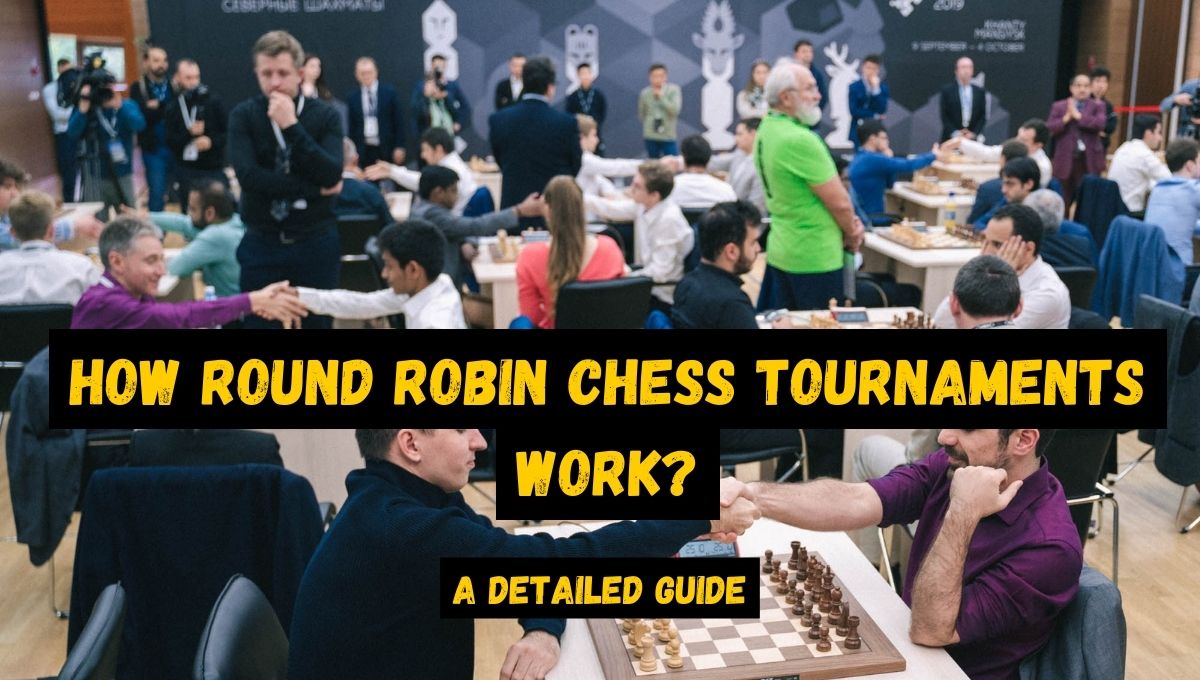In a round-robin chess tournament, players are paired in a way that ensures that each player faces every other player exactly once.
Keep reading or watch the video below to understand how it works:
Here’s how the pairing process typically works:
- Determine the Number of Rounds: First, you need to decide how many rounds the tournament will have. In a round-robin tournament, the number of rounds is equal to the number of players minus one. So, if you have 8 players, you would typically have 7 rounds.
- Create a Pairing Chart: Create a chart or a grid with rows and columns, where the rows represent the rounds, and the columns represent the players. Each player’s name is listed once in each column (or row).
- Initial Pairings: In the first round, you can pair players arbitrarily or randomly. After the first round, you’ll start applying the round-robin pairing rules.
- Round-Robin Pairing Rules: In subsequent rounds, you need to follow these rules to pair players:a. Fix the first player: One player is fixed at the top (or left) of the chart, and the other players rotate around this fixed player for each round.b. Rotate the players: For each round, you rotate the players to the right (or down) by one position. This means that the player who was at the second position in the previous round becomes the first player in the current round, and so on.c. Pair the players: The players in the first column (or row) are paired for the current round. In other words, the fixed player plays against the player directly below (or to the right of) them in the chart.d. Continue this process for all rounds until each player has played against every other player exactly once.
Here’s a simplified example with 4 players (A, B, C, and D) to illustrate the process:
Round 1:
- A vs. B
- C vs. D
Round 2:
- A vs. C
- B vs. D
Round 3:
- A vs. D
- B vs. C
Round 4 (final round in this example):
- A vs. B
- C vs. D
This way, each player plays against every other player once over the course of the tournament, ensuring a fair and balanced competition.
The pairing process can become more complex with a larger number of players, but the same principles apply.
Automated pairing software is often used in larger tournaments to handle the pairings efficiently and accurately.
What is the difference between Swiss chess and round-robin?
The main difference between a Swiss chess tournament and a round-robin chess tournament is that in round-robin, everyone plays everyone once, whereas in a Swiss system chess tournament, there is a preset number of rounds (e.g., 5), and after each round, players are paired with opponents of similar scores.
Check out more details on Swiss pairings here.

